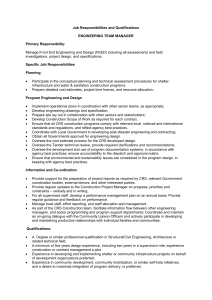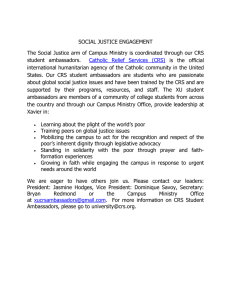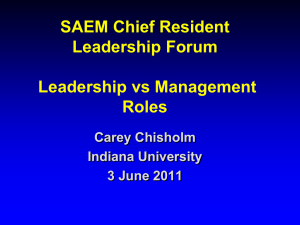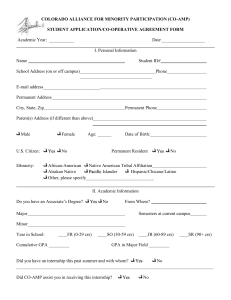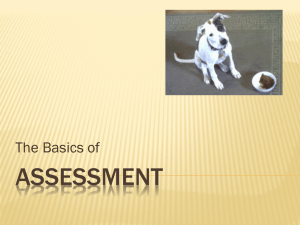Classroom Response Systems Everything You Wanted to Know About “Clickers” EASTERN MICHIGAN
advertisement
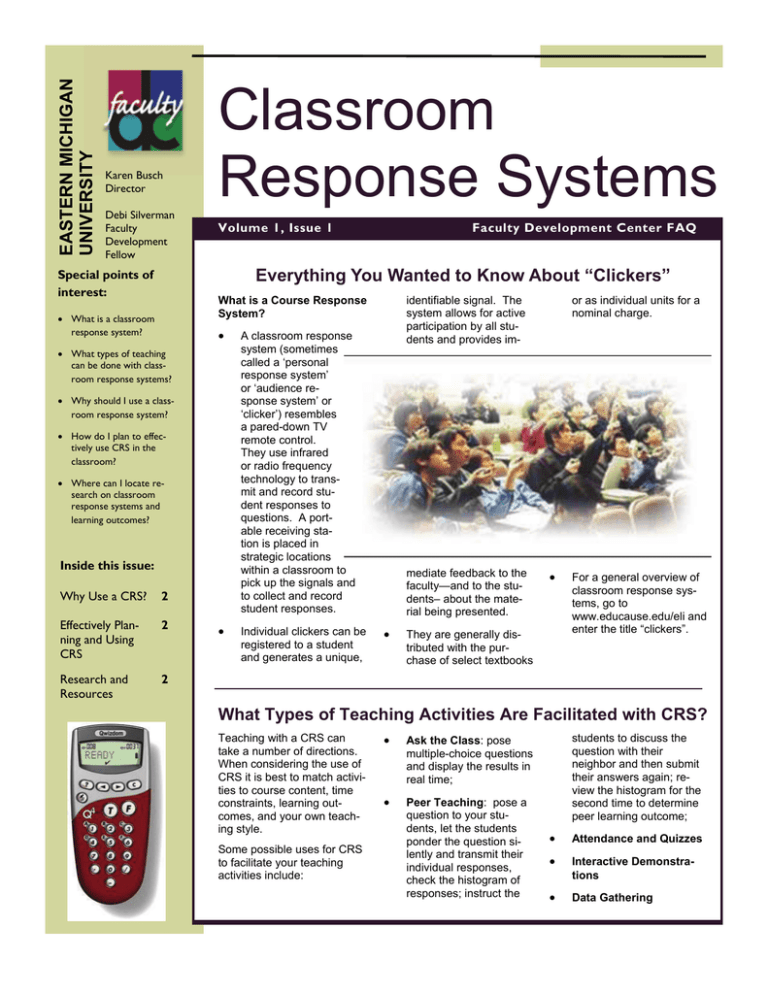
EASTERN MICHIGAN UNIVERSITY Karen Busch Director Debi Silverman Faculty Development Fellow Classroom Response Systems Volume 1, Issue 1 Faculty Development Center FAQ Everything You Wanted to Know About “Clickers” Special points of interest: What is a Course Response System? • What is a classroom response system? • • What types of teaching can be done with classroom response systems? • Why should I use a classroom response system? • How do I plan to effectively use CRS in the classroom? • Where can I locate research on classroom response systems and learning outcomes? Inside this issue: Why Use a CRS? 2 Effectively Planning and Using CRS 2 Research and Resources 2 • identifiable signal. The system allows for active participation by all students and provides im- A classroom response system (sometimes called a ‘personal response system’ or ‘audience response system’ or ‘clicker’) resembles a pared-down TV remote control. They use infrared or radio frequency technology to transmit and record student responses to questions. A portable receiving station is placed in strategic locations within a classroom to pick up the signals and to collect and record student responses. Individual clickers can be registered to a student and generates a unique, mediate feedback to the faculty—and to the students– about the material being presented. • or as individual units for a nominal charge. • They are generally distributed with the purchase of select textbooks For a general overview of classroom response systems, go to www.educause.edu/eli and enter the title “clickers”. What Types of Teaching Activities Are Facilitated with CRS? Teaching with a CRS can take a number of directions. When considering the use of CRS it is best to match activities to course content, time constraints, learning outcomes, and your own teaching style. Some possible uses for CRS to facilitate your teaching activities include: • Ask the Class: pose multiple-choice questions and display the results in real time; • Peer Teaching: pose a question to your students, let the students ponder the question silently and transmit their individual responses, check the histogram of responses; instruct the students to discuss the question with their neighbor and then submit their answers again; review the histogram for the second time to determine peer learning outcome; • Attendance and Quizzes • Interactive Demonstrations • Data Gathering Page 2 Classroom Response Systems Why Should I Use a Classroom Response System? Faculty should consider using a classroom response system to: • Maintain students’ attention during a lecture: Studies show that most people’s attention lapses after 10 to 18 minutes of passive listening. Inserting a few CRS-facilitated activities every so often during a lecture can help maintain students’ attention; • Promote active student engagement during a lecture: Posing well-chosen questions to students during lecture and expecting answers from each student can cause students to reflect on and assimilate course content during class; • Promote discussion and collaboration among students during class with group exercises that require students to discuss and come to a consensus; • Encourage participation from each and every student in a class. Asking a question verbally and calling on the first student to raise his or her hand results in one student participating. A CRS-facilitated activity can involve not one, but all of the students in the class; • Create a safe space for shy and unsure students to participate in class. A CRS gives students a chance to respond to a faculty’s question silently and privately, enabling a student who might not typically speak up in class to express their thoughts and opinions. From: Vanderbilt Center for Teaching: Classroom Response Systems / Audience Response For additional ways in which you can use a CRS go to: “Putting up your hand in http://www.vanderbilt.edu/cft/resources/teaching_resources/technology/crs.htm class is a pretty complex thing, kind of dangerous, socially and academically. But everyone is willing to give anonymous answers. Everyone is equally involved and the answers are honest. And fast.” - Victor Edmonds, Educational Technology Services, University of California, Berkeley Effectively Planning to Use CRS in the Classroom The following ideas and suggestions were compiled by Margaret Gunderson and Guy Wilson from Educational Technologies at Missouri (http://etatmo.missouri.edu/ toolbox/doconline/StudentResponseSystems.pdf) • Determine which response system you should use and WHY you want to use it; • Start as early as possible to learn the system; • Plan and organize how you will use it in the class; • Consider your implementation ‘work in progress’ • Develop questions that will encourage student responses • During the first week of class, prepare students in how to use the technology • When using the CRS throughout the semester, introduce the activities with an explanation of the learning outcome and encourage student responses Research and Resources on Classroom Response Systems • Available from Educause at: www.educause.edu/eli/ • • 7 things you should know about Clickers Transforming Student Learning with Classroom Communication Systems (Educause Center for Applied Research, Research Bulletin Volume 2004, Issue 3, February 3, 2004) • Clickers in the Classroom by Douglas Duncan. Published by Benjamin Cummings in 2005, this paperback book, priced at $14.70, provides information on learning how clickers can enhance your classroom lectures. ISBN-13: 9780805387285. • Interactive Teaching Using the Classroom Performance System. View Quicktime video clips by Professor Dee Silverthorn from the School of Biological Sciences at University of Texas. Available at: http://www.utexas.edu/academic/cit/ gallery/utprofiles/cps/silverthorn/index.html • Research on the Effectiveness of Classroom Response Systems by Derek Bruff. Available at: http://www.vanderbilt.edu/ cft/resources/teaching_resources/technology/crs_biblio.htm
